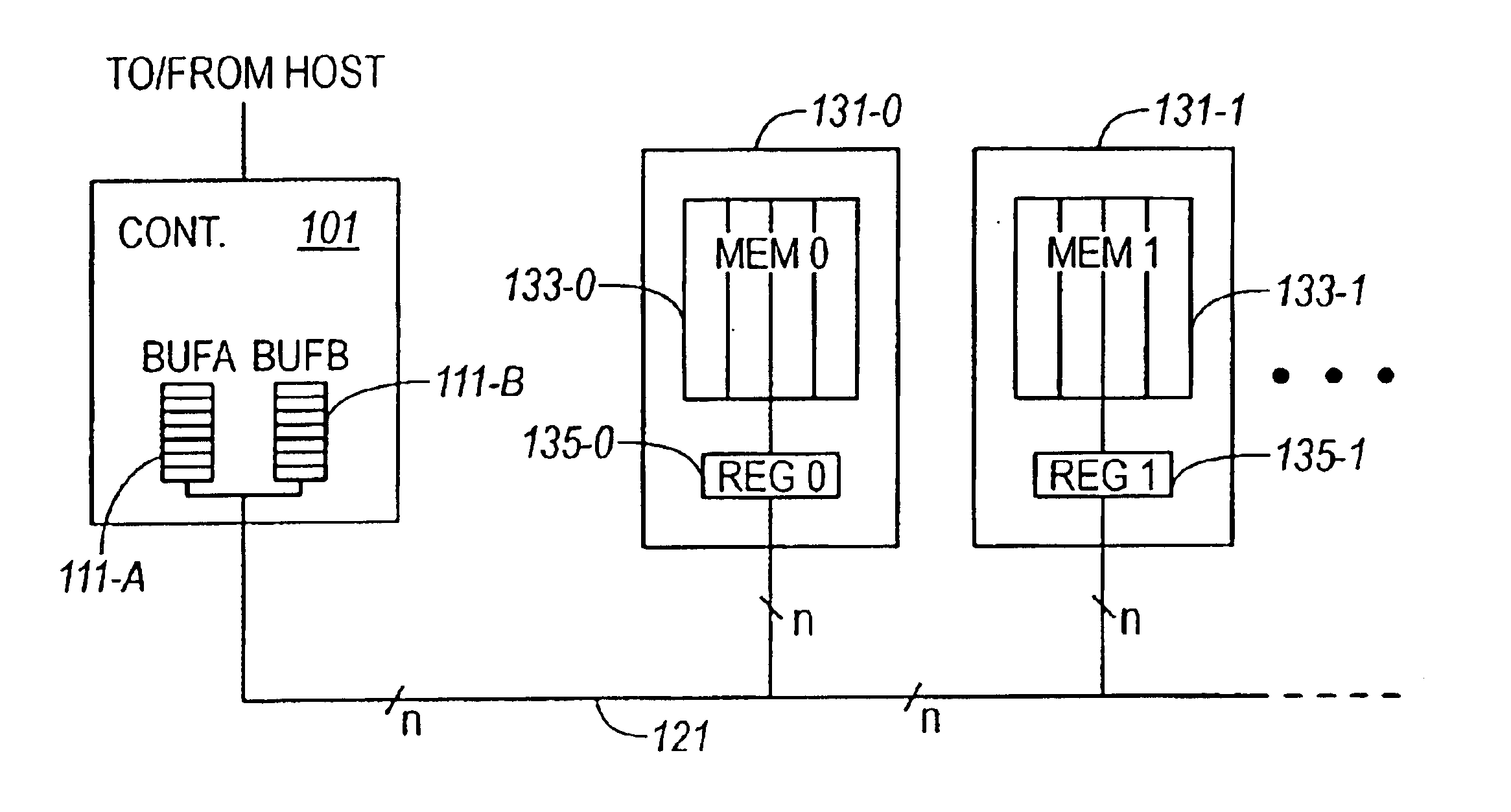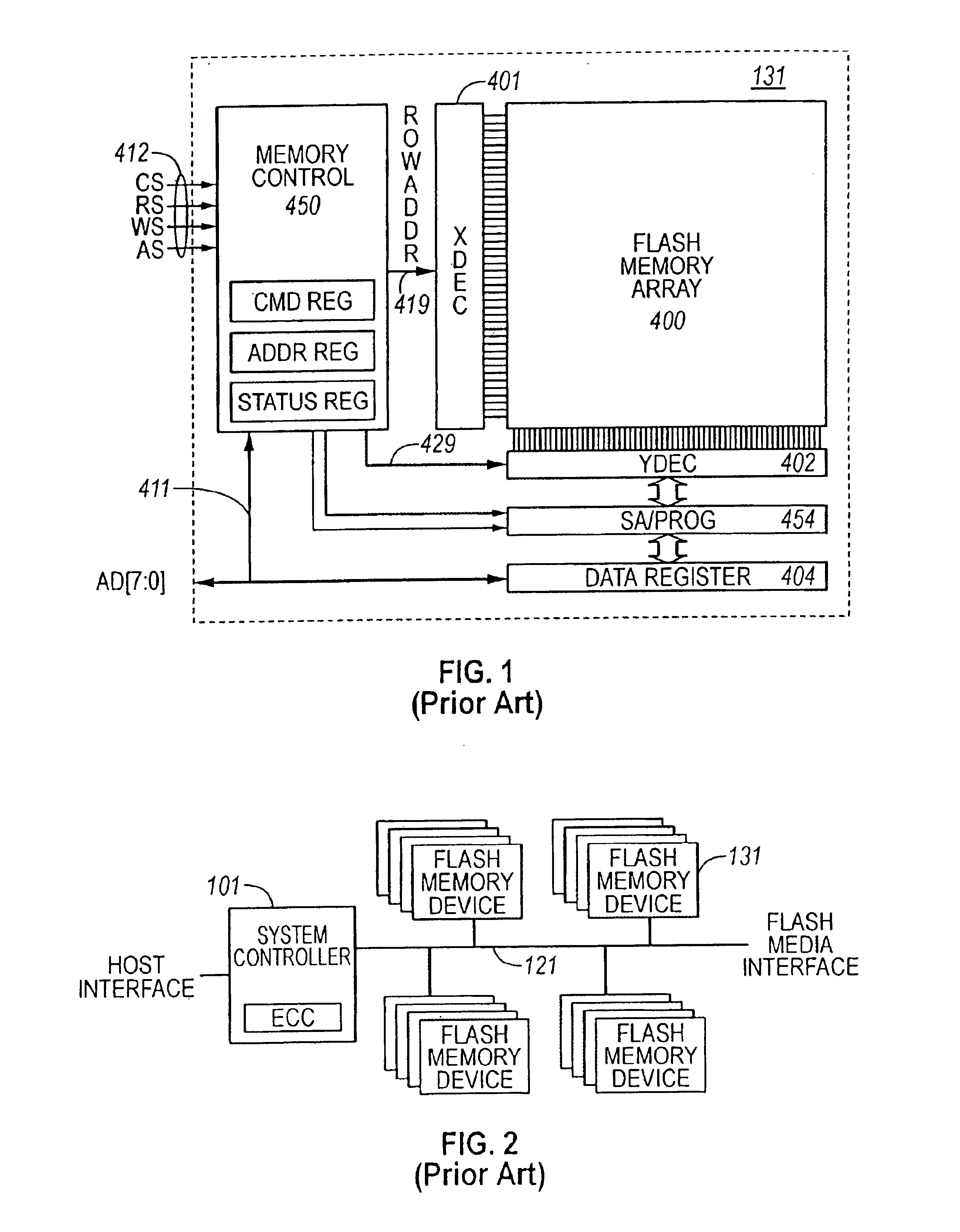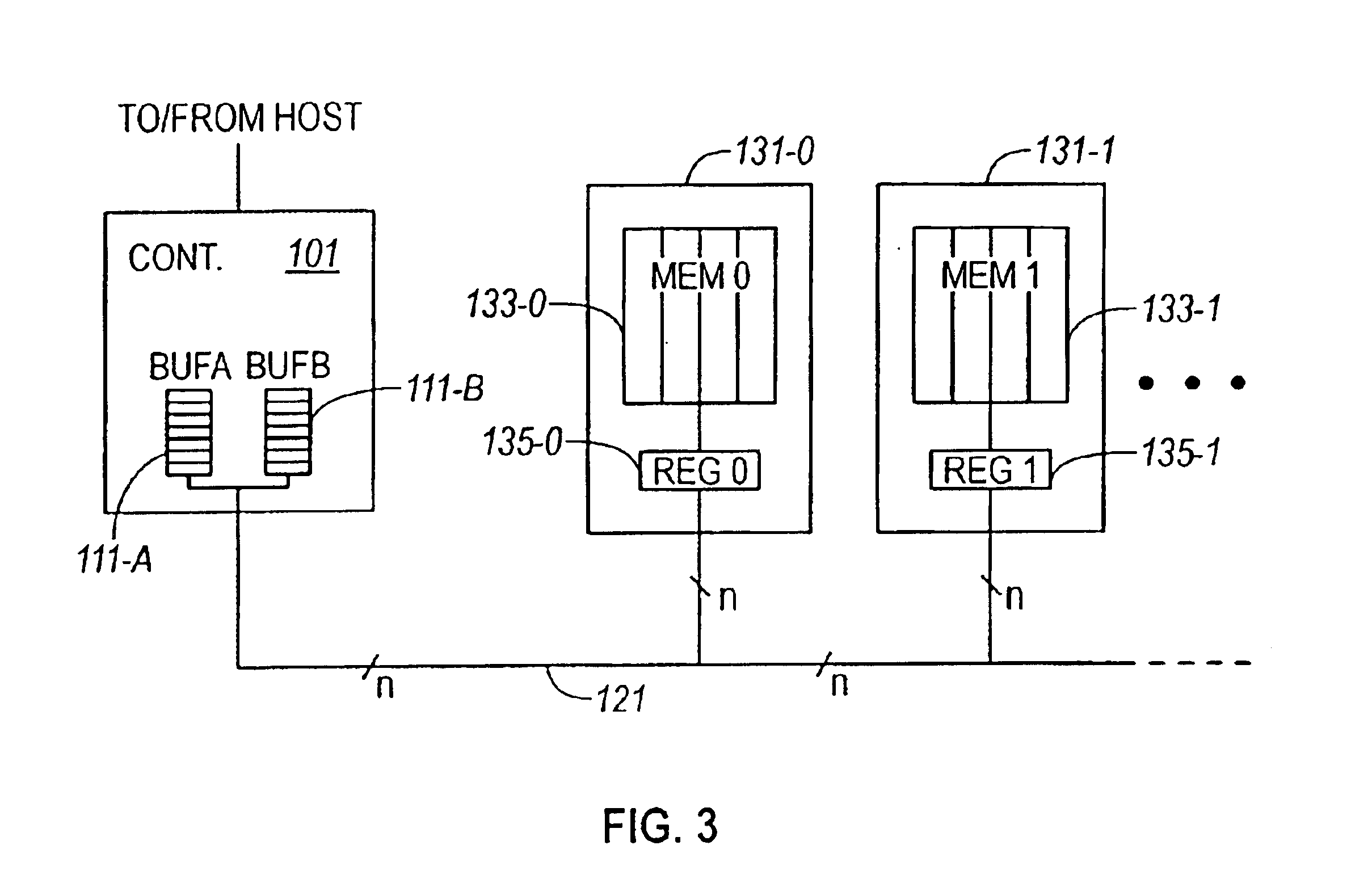Pipelined parallel programming operation in a non-volatile memory system
- Summary
- Abstract
- Description
- Claims
- Application Information
AI Technical Summary
Benefits of technology
Problems solved by technology
Method used
Image
Examples
Embodiment Construction
The various aspects of the present invention are applicable to non-volatile memory systems in general. Although the description below, as well as that in the Background, is given mainly in terms of an EEPROM Flash memory embodiment, the particular type of storage unit used in the memory array is not particularly important in the present invention. The particulars of how the storage elements are read, are written, and store data do not enter in to the main aspects of the present invention and can be those of any of the various non-volatile systems.
In order to improve performance by reducing programming time, a goal is to program as many cells in parallel as can reasonably be done without incurring other penalties. One implementation divides the memory array into largely independent sub-arrays or units, each unit in turn being divided into a large number of blocks, as described in U.S. Pat. Nos. 6,426,893 and 6,570,785,which are incorporated by reference above. Pages of data are then ...
PUM
 Login to View More
Login to View More Abstract
Description
Claims
Application Information
 Login to View More
Login to View More - R&D
- Intellectual Property
- Life Sciences
- Materials
- Tech Scout
- Unparalleled Data Quality
- Higher Quality Content
- 60% Fewer Hallucinations
Browse by: Latest US Patents, China's latest patents, Technical Efficacy Thesaurus, Application Domain, Technology Topic, Popular Technical Reports.
© 2025 PatSnap. All rights reserved.Legal|Privacy policy|Modern Slavery Act Transparency Statement|Sitemap|About US| Contact US: help@patsnap.com



